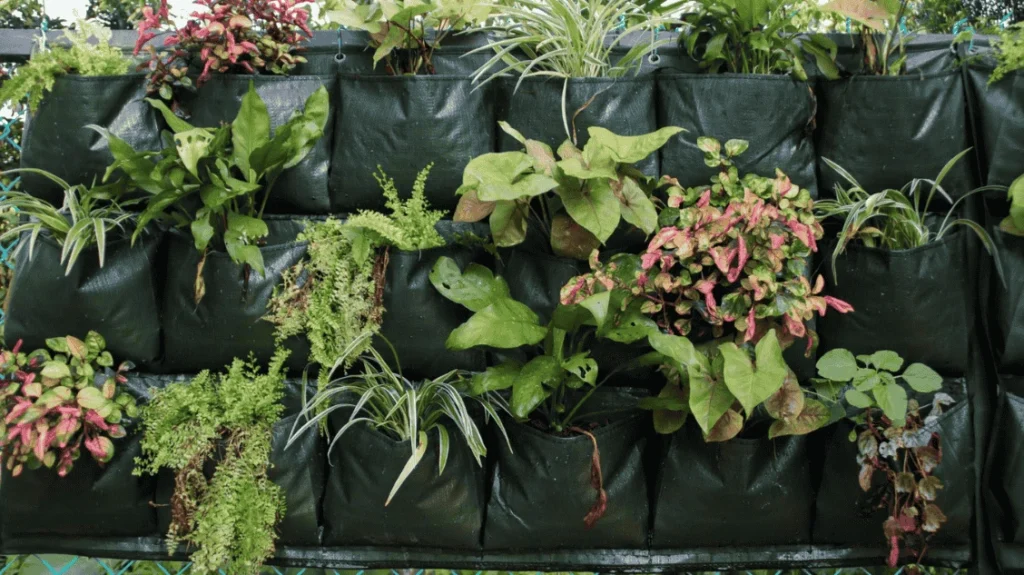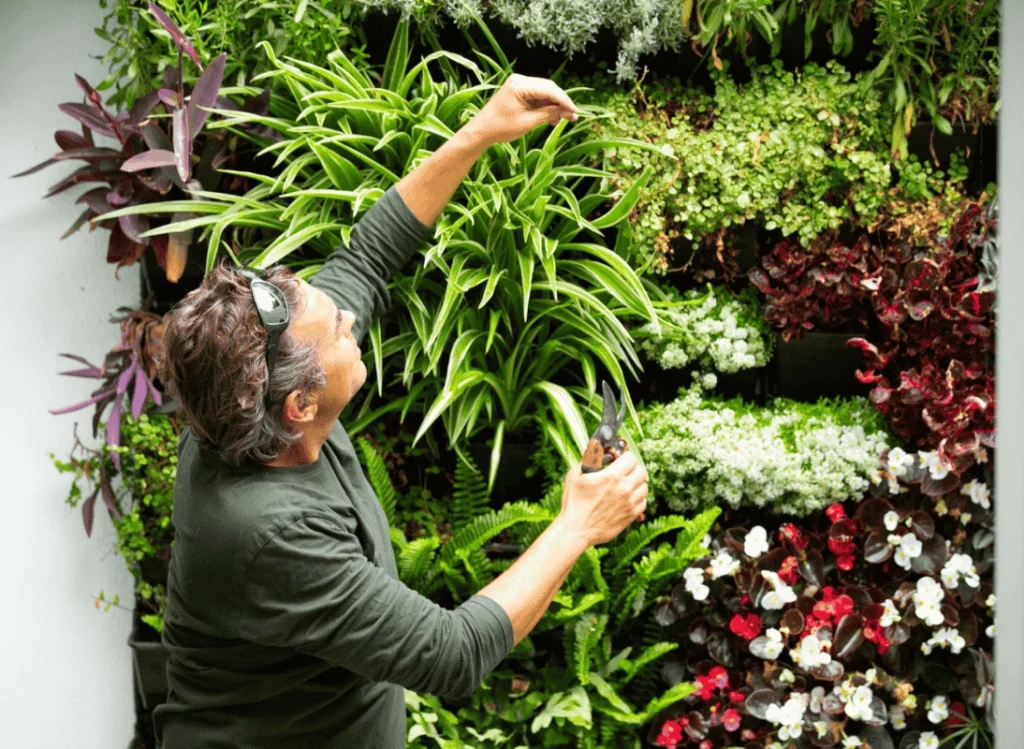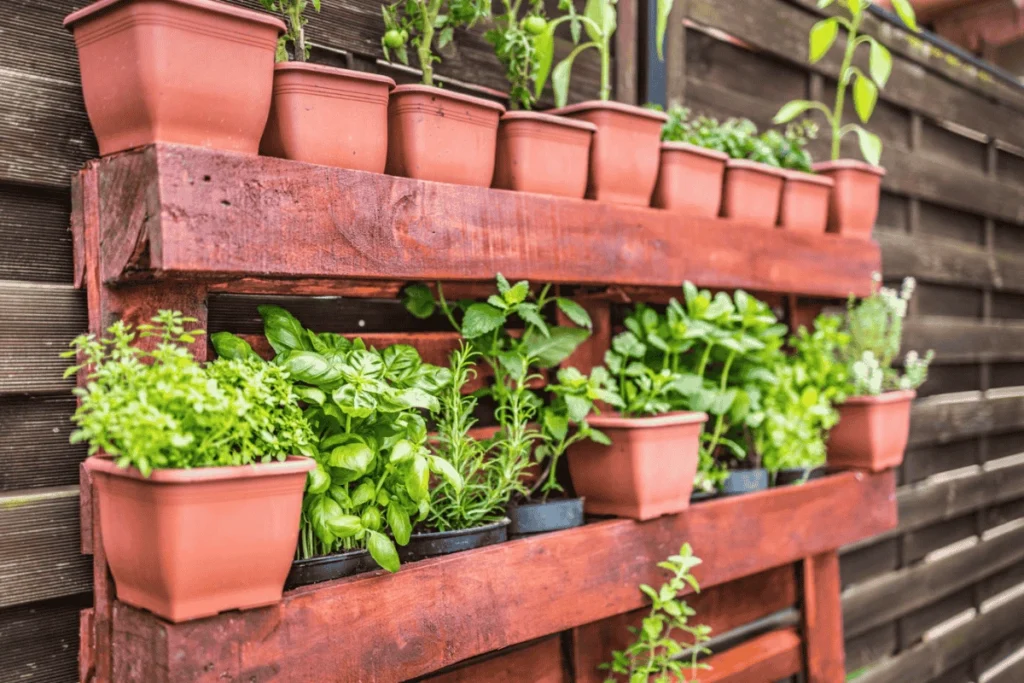🌱 Bringing Nature and Sustainability Into Your Home 🌍
Looking for a way to grow fresh, healthy food 🥗 right at home while reducing your carbon footprint? 🌎 Organic vertical gardens offer the perfect solution by blending sustainability, health, and innovation. 🌿💧
In this guide, we’ll explore how to start your own vertical garden 🌱 and enjoy the numerous benefits it provides! 🏡✨
🌟 Benefits of Organic Vertical Gardens 🍃
🥗 Healthier Produce
Grown without synthetic pesticides or fertilizers, organic gardens yield nutrient-rich, chemical-free plants. 🥬🥒
🌎 Eco-Friendly
Organic gardening reduces reliance on chemicals, promotes biodiversity 🐝, and minimizes environmental impact. 🌿🌍 Organic vertical gardens also help conserve water and reduce your carbon footprint. 💦🌱
🪴 Efficient Use of Space
Perfect for urban homes 🏙️, vertical gardens optimize wall space for growing fresh greens and vegetables. 🌱🥗
💵 Cost-Effective
Producing your own organic food reduces grocery expenses over time. 🥕💚
🌺 Aesthetic Appeal
Lush, thriving greenery enhances your home’s visual appeal 🌸 and creates a calming atmosphere. Organic vertical gardens also add a decorative touch to balconies, patios, and indoor spaces. 🧘♀️🌿

🛠️ Steps to Start Your Own Organic Vertical Garden 🌱
📝 Step 1: Choose Your Location 📍
Selecting the right location is crucial for the success of your organic vertical garden:
- ☀️ Light Requirements: Most plants need at least 4–6 hours of sunlight daily. Choose a sunny wall or use grow lights for indoor spaces. 💡🌞
- 📏 Space Availability: Measure the area and decide on the size of your garden. 🪟
- 💦 Accessibility: Ensure the garden is easy to water and maintain. 🪣💧
🌿 Step 2: Select Organic-Friendly Materials 🪵

- 🪜 Frames and Supports: Use natural, untreated wood, bamboo, or recycled materials suitable for organic vertical gardens. 🌳♻️
- 🪴 Planters: Choose eco-friendly containers like terracotta pots or biodegradable options. 🌱🌍
- 🌱 Soil: Opt for organic potting soil rich in nutrients and free from synthetic additives. 🥬🌿
💡 Looking for the best container for your organic vertical garden? 🪴
Discover why fabric pots are considered the top choice for sustainability.
👇 Watch the full comparison video!
🪴 Step 3: Choose Your Plants 🌼
Organic vertical gardens allow you to grow a variety of plants that thrive organically:
- 🌿 Herbs: Basil, cilantro, parsley, thyme. 🌱
- 🥗 Leafy Greens: Lettuce, spinach, arugula, kale. 🥬
- 🍅 Vegetables: Cherry tomatoes, bell peppers, cucumbers. 🍆
- 🌻 Flowers: Marigolds, nasturtiums, zinnias. 🌸
🧪 Step 4: Prepare the Soil 🌾
Creating a nutrient-rich base is essential for organic vertical gardens:
- 🌱 Mix organic compost, coconut coir 🥥, and perlite for a nutrient-rich, well-draining potting mix.
- 🪴 Add slow-release organic fertilizers like bone meal or worm castings 🐛 for long-lasting nutrition.
🏗️ Step 5: Set Up the Garden 🪜
Setting up your organic vertical garden involves:
- 🔩 Install the Frame: Securely mount the structure on your chosen wall. 🪵🛠️
- 🪴 Add Planters: Attach pots using hooks, clamps, or shelves. 🪢
- ☀️ Layer Strategically: Place taller plants at the top and compact ones below for optimal light exposure. 🌿📏
🌱 Step 6: Plant and Water 💦
- 🌱 Planting: Sow seeds or transplant seedlings into the prepared soil. 🌿🪴
- 🚿 Watering: Use a watering can or drip irrigation system to maintain consistent moisture levels. 💧🪣
🌿 Organic Care Practices 🐝
♻️ 1. Composting 🍂
- Create a small compost bin for kitchen scraps like fruit peels 🍌, coffee grounds ☕, and eggshells 🥚.
- Use the compost to naturally enrich your garden soil. 🌱🌾
🐞 2. Natural Pest Control 🪲
- Attract helpful insects such as ladybugs 🐞 to manage pests naturally.
- Use neem oil 🌿 or homemade sprays (garlic 🧄 or chili 🌶️) to deter harmful insects.
🔄 3. Crop Rotation 🌱
- Rotate plant types seasonally to prevent nutrient depletion and reduce pest problems. 🌿🍅
✂️ 4. Pruning and Maintenance 🌳
- Regularly prune overgrown plants ✂️ to promote air circulation and healthy growth. 🌱💨

🎨 Design Tips for Organic Vertical Gardens 🪴🌼
Enhance the beauty and functionality of your organic vertical garden with these design ideas:
🌾 Incorporate Mulching 🍂
Use organic mulch like straw or wood chips to retain moisture 💧 and suppress weeds. 🌱
🌺 Create Aesthetic Layers 🏡
Mix edible plants with flowers for a visually appealing and functional garden. 🌿🌸
🛠️ Add Functional Features 🪴
Include self-watering systems, hanging baskets, or modular planters for convenience. 💦🪣
♻️ Use Recycled Materials 🌱

Upcycle old items like shoe organizers 👟, PET bottles ♻️, or wooden pallets for a sustainable organic vertical garden design. 🪵
👉 Want to learn how to build your own sustainable vertical garden using pallets? 🌿🪜 Check out our guide: How to Create Vertical Gardens with Reused Pallets Sustainably for step-by-step instructions and creative ideas! 💚
🌿 Incorporating Native Plants in Your Organic Vertical Garden 🐝

Enhance biodiversity 🐦 and sustainability by adding native plants 🌱 to your vertical garden. They are well-suited to local climates, require less maintenance, and attract beneficial pollinators. 🌸🐝
👉 Want to learn more? Check out our guide: Why More Gardeners Are Growing Native Plants 🌱🌍
⚠️ Common Challenges and Solutions 🌱💪
Here are some common hurdles and how to overcome them when caring for organic vertical gardens:
🌥️ Limited Sunlight:
💡 Solution: Use grow lights to ensure adequate illumination. ☀️
🐛 Pest Issues:
🌿 Solution: Use natural repellents like neem oil and maintain good air circulation. 🪲💨
💧 Water Retention:
🍂 Solution: Apply organic mulch to retain soil moisture. 🌱
🪴 Space Constraints:
📦 Solution: Use stackable or hanging planters to maximize vertical space. 🪜
🌱 Why Go Organic with Vertical Gardening? 🌍🥗
Investing in organic vertical gardens provides long-term benefits for both you and the environment:
- Health Benefits: Organic produce is free from harmful chemicals and packed with natural nutrients.
- Environmental Impact: Organic practices reduce pollution, conserve water, and protect soil health.
- Sustainability: Growing your own organic garden contributes to a more sustainable lifestyle.
❓ Frequently Asked Questions (FAQs) 🪴💭
🌞 1. How many hours of sunlight are required for a vertical garden?
Most plants need at least 4–6 hours of direct sunlight ☀️ per day. If natural light is limited, supplement with grow lights 💡.
🪴 2. What are the best vertical garden systems for beginners?
Beginner-friendly options include stackable planters 🪜, wall-mounted racks 🪟, and modular systems 🪴 that are easy to set up and maintain.
🥦 3. Can I grow vegetables without using chemicals?
Absolutely! 🌱 Organic gardening uses natural pest control 🌿 and compost-based fertilizers 🥕 for chemical-free produce.
💧 4. How frequently should a vertical garden be watered?
Most vertical gardens require watering every 2–3 days 💦, with more frequent watering in hot climates. 🌞
🐛 5. How can I control pests organically?
Introduce beneficial insects 🐞, use neem oil 🌿, or apply homemade sprays (garlic 🧄, chili 🌶️) to deter pests naturally.
🌱 6. How do I create nutrient-rich soil?
Mix organic compost 🍂, coconut coir 🥥, and perlite 🌾 for a well-draining, nutrient-rich base. Add worm castings 🐛 or bone meal for extra nourishment.
🌸 7. Can I grow flowers in my vertical garden?
Yes! 🌼 Flowers like marigolds, zinnias, and nasturtiums thrive in vertical setups and attract pollinators 🐝.
🪜 8. How can I maximize space?
Use stackable planters 🪴, hanging baskets 🧺, or trellises 🌿 to make the most of vertical space. 🏡
🌿 Cultivate Green and Clean 🏡🌱
Starting an organic vertical garden is a rewarding way to embrace sustainability 🌎, improve your diet 🥗, and beautify your home 🌸. With the right materials, plants, and care techniques 🌱🛠️, you can create a thriving garden that nourishes both your body and soul while supporting a greener planet. 💚🌍
🌱 Ready to cultivate your green space? Start your organic vertical garden today and experience the benefits of fresh, homegrown produce! 🥕🌶️🥗

